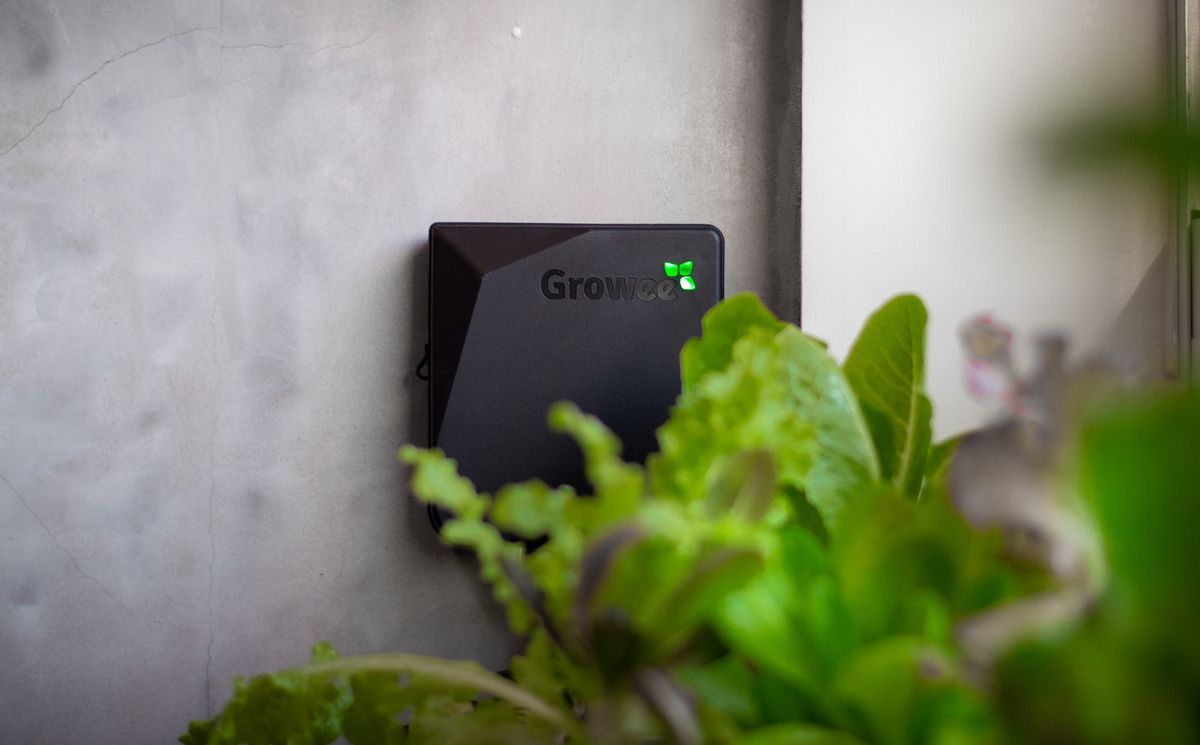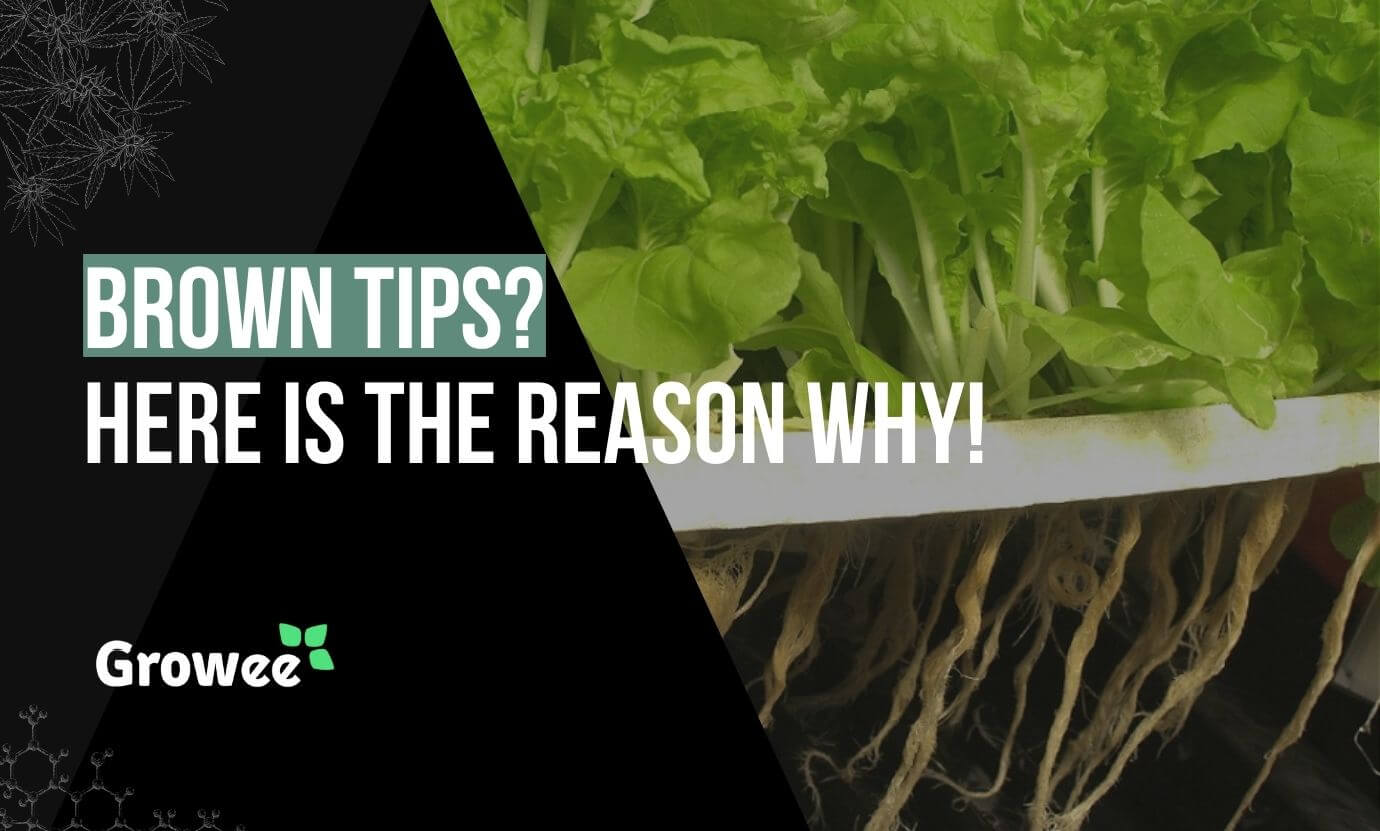Gardening and hydroponics are popular ways to grow plants, but sometimes the leaves can become burnt, leaving a brown or crispy appearance, starting at the edges. This can be frustrating for gardeners and hydroponic growers, as it can indicate a problem with the plant’s health. In this article, we will discuss the main causes of burnt leaves in gardening and hydroponics and provide tips on how to avoid and fix the problem.
See How Growee Can Save You Time By Automating Your Plants Feeding
Water pH – Automated pH Up and Down Control
Nutrients Mixing – Automated Nutrient Dosing with Target EC / PPM Control.
Control From Anywhere – WiFi Connection and mobile App
What are the main causes of brown tips on leaves
- Watering – One of the most common causes of burnt leaves is watering issues. Over-watering or under-watering a plant can lead to leaf burn. Over-watering can cause the leaves to turn brown and crispy, while under-watering can cause the leaves to turn yellow and dry. It is important to find the right balance when watering plants to ensure that they are getting the right amount of moisture.
- Fertilizer issues – Another common cause of burnt leaves is fertilizer issues. Fertilizer burn can occur when the plant is given too much fertilizer, causing the leaves to turn brown and crispy starting from the outside. This can be caused by using too much fertilizer or using the wrong type of fertilizer. It is important to follow the instructions on the fertilizer package and use the right amount for the type of plant you are growing.
- Cold damage – can also cause burnt leaves. When a plant is exposed to cold temperatures, the leaves can turn brown and crispy. This can happen when a plant is exposed to cold drafts or when a plant is placed in a room that is too cold. It is important to keep plants in a warm environment to avoid cold damage.
- Sun damage – is another cause of burnt leaves. When a plant is exposed to too much sunlight, the leaves can turn brown and crispy. This can happen when a plant is placed in direct sunlight or when a plant is not getting enough shade. It is important to make sure that plants are getting the right amount of sunlight and shade to avoid sun damage. Reading up about the region from where the plant originates and more information from Wikipedia for example can highly improve success.
- Chemical damage – can also cause burnt leaves. When a plant is exposed to chemicals such as pesticides or herbicides, the leaves can turn brown and crispy. It is important to use the right type of chemicals and follow the instructions on the package to avoid chemical damage.

How to save brown tipped plants
To avoid burnt leaves in gardening and hydroponics, it is important to fertilize with adequate amounts of calcium and magnesium ,called cal-mag for short. Calcium is important for plant growth and can help prevent leaf burn. Cal-mag foliar sprays can also be used to prevent leaf burn. It is also important to avoid high E.C.-soluble salts which can cause the leaves to burn.
This can be done autonomously within given parameters like magic !! ,by a GROWEE system.
Another way to avoid burnt leaves is to select resistant varieties. Some plants are more resistant to leaf burn than others, so it is important to choose the right type of plant for your gardening or hydroponic needs.
If your plant already has burnt leaves, one way to save it is to flush the plant. Flushing is the process of removing the build-up of salts and chemicals from the soil or hydroponic solution. For practical reasons simply continuously water the substrate while testing the runoff water EC until the water EC is close to zero. If using reverse osmosis water or close to base line EC of tap water inlet .This can help to restore the plant’s health and prevent further leaf burn.

Final words
In conclusion, burnt leaves in gardening and hydroponics can be caused by a variety of factors, including watering issues, fertilizer issues, cold damage, sun damage, and chemical damage. To avoid burnt leaves, it is important to fertilize with adequate amounts of calcium, use calcium foliar sprays, avoid high E.C.-soluble salts, and select resistant varieties. If your plant already has burnt leaves, flushing can help to save it. By understanding the causes of burnt leaves and taking the right steps to prevent and fix the problem, gardeners and hydroponic growers can keep their plants healthy and thriving.
FAQ
What are burnt leaves called?
Burnt leaves are also known as leaf scorch or leaf burn.
What do burnt leaves mean?
Burnt leaves can indicate a problem with the plant’s health, such as watering issues, fertilizer issues, cold damage, sun damage, or chemical damage.
Can a plant recover from burnt leaves?
While a plant can recover from burnt leaves, it’s important to address the underlying cause of the burn to prevent further damage. If the burn is severe, it may take some time for the plant to recover. Flushing the soil or hydroponic solution can help to restore the plant’s health and prevent further leaf burn.
Why does the EC go up too much ,and how can this be solved,?
When the fertilizer solution is controlled by hand ,this easily can bring about imbalances, creating a high or low EC.
This can be solved easily by implementing a full Growee system ,seamlessly and automatically controlling all the parameters ,while data logging and creating history graphs for future analysis



